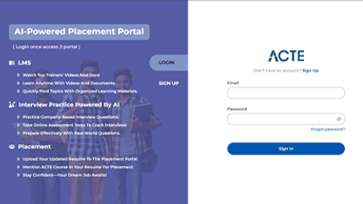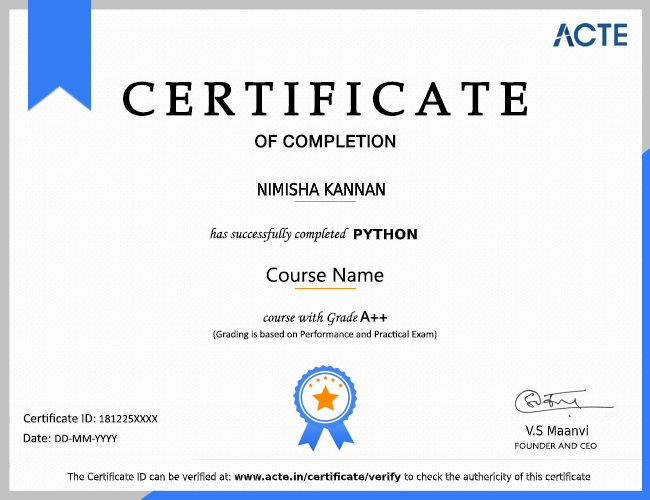Big Data courses in Jaipur are meant to provide in-depth understanding of platforms and tools for big data analysis. These courses contain real-world projects and case studies that give you a taste of what to expect in the real world. This gives you the opportunity to gain hands-on experience with Big Data technologies so that you can build successful Big Data solutions for businesses. In Jaipur, which is India's technological powerhouse, Big Data is a perfect fit. A large number of startups, IT businesses and MNCs are located in Bangalore, making the need for Big Data experts like data analysts, big data engineers, big data architects and data scientists exceedingly high.
Additional Info
Types of Big Data:
In terms of types of big data, now that we understand what is big data, let's have a closer look at the following:
Structured:-
A structured data set is one kind of big data, and we define structured data as information that is processed, stored, and retrieved in a predefined way. Simple search engine algorithms allow users to access highly organized information stored in a database from anywhere with ease. Employee tables in company databases, for instance, will be structured so that employee information, such as their job titles, their salaries, etc., are arranged in a uniform way.
Unstructured:-
A dataset that is unstructured lacks any pattern or structure whatsoever. Analyzing unstructured data becomes extremely time-consuming and difficult as a result. Unstructured data is an example of email. Big data can be structured or unstructured.
Semi-structured:-
Big data can be semi-structured as well. The term semi-structured data refers to data that contains both the structured and unstructured formats, i.e., structured and unstructured data. Specifically, it refers to the data that does not belong in a specific repository (database) but nevertheless contains vital information or tags that separate the various components contained within it.
Characteristics of Big Data:
Several Gartner analysts put forth the three 'V's of big data in 2001 - namely variety, velocity, and volume. Let's take a look at big data's characteristics.
Whether big data is big or not can be determined by observing these characteristics alone.
1) Variety:-
There are various types of Big Data. Typically, it refers to structured, unstructured, and semistructured data that is collected from multiple sources. The data collected in the past was only available through spreadsheets and databases, but today it is available in so many other forms including emails, PDFs, videos, audios, social media postings, etc. Big data has many important characteristics, including variety.
2) Velocity:-
As it relates to real-time data creation, speed refers to how fast the procedure moves. An all-inclusive perspective encompasses change rates, links of incoming data sets at varying speeds, and bursts of activity.
3) Volume:-
Big data is characterized by its volume. Big Data is the label used to refer to the vast amount of data generated on a daily basis from various sources, including social networks, business processes, machines, networks, individual interactions, etc. Data warehouses store such a large volume of data. Thus concludes our discussion of big data characteristics.
Hadoop’s Components:
Hadoop is a comprehensive framework. Data is stored and processed by it using many components.
The main sections are, however, the following:
HDFS:-
Data can be stored in readily accessible formats on the Hadoop Distributed File System. The data is distributed across multiple nodes, so it is distributed.
An HDFS node consists of a slave node and a master node. Datanodes are slave nodes that serve as slaves to Namenodes. Identifies which blocks are replicated and where the data is stored. The Namenode stores this metadata.
Managing and organizing DataNodes is its responsibility. The DataNodes are where you actually store your data.
YARN:-
This is another resource negotiator, so the name YARN stands for Yet Another Resource Negotiator. There are many applications for this system in Big Data processes.
Multiple scheduling methods are supported by YARN. The reason that YARN is such a great solution is that, in the past, scheduling tasks did not provide any options to the user. For certain processing jobs, it is possible to reserve some cluster resources. Additionally, you can set a limit on how many resources each user can reserve.
MapReduce:-
Among the Apache Hadoop collection of tools, MapReduce is another feature that is quite powerful. In its most basic form, it identifies data and converts it into a format that can be used for data processing.
Two sections make up MapReduce: Map and Reduce (hence the name MapReduce). First, we identify the data and break it down into pieces for parallel processing. Detailed information about the input data is provided in the second part of the report.
Any failed project can also be executed by MapReduce. Maps are first performed, followed by shuffles, and finally, reducing. Hadoop's MapReduce is one of the most popular solutions, and because of its many features, it has become synonymous with the industry.
Python and Java are two languages it can work in. Big Data professionals will use this tool repeatedly.
A common Hadoop component is:-
The Hadoop Commons is a collection of free tools and software that anyone using Hadoop can use. This is a library of great tools that can help you do your job more easily and efficiently.
Hadoop’s Features:
Enterprises in the Fortune 500 have a great deal of interest in Hadoop. Big Data analytics plays a key role in that. Let's focus on its features now that we know why it was created and what its components are.
Big Data Analytics:-
Big data analytics was the reason Hadoop was created. Massive amounts of data can be processed in a short amount of time. Using this method, you can store large amounts of data without affecting the efficiency of your storage system.
Data is stored in Hadoop clusters, and they are processed in parallel. This is due to its ability to transfer logic only to working nodes, thus making it use less network bandwidth. It saves you a great deal of energy and time because it processes data in parallel.
Cost-Effectiveness:-
Hadoop's cost-effectiveness is another advantage. Hadoop instead of conventional technologies can save companies a lot of money on data storage devices. It costs a lot of money to run a large data storage system. It is also expensive to upgrade the same. Data storage units can be upgraded for less cost using Hadoop, which uses fewer storage units. In addition to improving your efficiency, Hadoop provides a number of other benefits. As a whole, it's an excellent solution for any business.
Scaling:-
Any organization can experience a rise in data requirements over time. Facebook accounts, for instance, are growing every day. When an organization's data requirements increase, the capacity of its data storage needs to be increased.
With Hadoop, you can scale your data in a more secure manner. Adding more cluster nodes allows you to scale the cluster up and down as needed. Adding nodes to your Hadoop system will easily increase its capability.
Additionally, scaling the system would not require modifying the application logic.
Error Rectification:-
In Hadoop's environment, all data pieces are replicated across all nodes. The data is backed up if there is a failure on a specific node. It prevents data loss and gives you freedom to work freely. You can continue working on your project regardless of the node failure.
5 Benefits of Hadoop for Big Data:
As Hadoop was designed to deal with big data, it should come as no surprise that it has so many benefits. These are the five main benefits:
Speed:- Thanks to Hadoop's concurrency, MapReduce model, and HDFS, users can execute complicated queries with ease.
Diversity:- There are different types of data data formats that can be stored in HDFS, such as structured, semi-structured, and unstructured.
Cost-Effective:- Open-source data framework Hadoop is used to manage large amounts of data.
Resilient:- Ensure fault tolerance by replicating data stored in one node to other nodes in the cluster.
Scalable:- Adding more Hadoop servers is easy because Hadoop works in a distributed environment.
Who is using Big Data? 5 Applications
Big Data is best understood by the people who are using it. The following industries fall into this category:
1) Healthcare:-
Healthcare is already undergoing a dramatic change due to Big Data. Now, medical professionals and health care professionals can offer personalized medical care to individual patients thanks to predictive analytics. Furthermore, fitness wearables, telemedicine, and remote monitoring - powered by Big Data and artificial intelligence - are changing lives for the better.
2) Academia:-
Education is also being improved by big data today. Online courses have expanded educational opportunities far beyond the confines of the traditional classroom. The development of digital courses leveraging Big Data technologies is gaining popularity in academic institutions in order to foster all-round development of students.
3) Banking:-
Big Data is used by the banking industry to detect fraud. It is possible to detect fraudulent acts such as the misuse of credit cards, the storing of inspection tracks, the wrongful alteration of customer statistics, etc., using Big Data tools in real time.
4) Manufacturing:-
Big Data in manufacturing offers significant benefits in terms of supply strategies and quality, as specified by TCS' Global Trend Study. By creating a transparent infrastructure, Big data helps manufacturers predict uncertainties and incompatibilities that can negatively impact their business.
5) IT:-
Information technology companies are among the largest users of Big Data, utilizing it to improve employee productivity, reduce operational risks, and optimize their operating efficiency. The IT sector is continually driving innovation by combining Big Data technology with artificial intelligence and machine learning.
6) Retail:-
Brick-and-mortar retail stores are changing their ways of working due to big data. Through local demographic surveys, POS scanners, RFID, customer loyalty cards, store inventories, etc., retailers have collected vast amounts of data over the years. In the process, they are creating personalized customer experiences, increasing sales, increasing revenue, and delivering outstanding customer service.
Smart sensors and Wi-Fi are even used to track customer movements, which aisles customers frequent, and for how long they linger in aisles. Their marketing and product design strategies also adapt as a result of reviewing social media data.
7) Transportation :-
For the transportation industry, Big Data Analytics has enormous value. Both public and private transportation companies all over the world employ Big Data technologies to optimize route plans, manage traffic, manage congestion, and improve services. In addition, transportation services utilize Big Data for revenue management, for driving technological innovation, expanding logistics, and for improving their competitive edge.
Career Path in Role of Big Data:
Data Analyst:-
Among the responsibilities of a data analyst are to use big data tools to process data. Typically, analysts work with structured, unstructured, and semi-structured data. Among the tools and technologies they use are hive, pig, NoSQL databases, and frameworks such as Hadoop and Spark. Their main responsibility is to increase revenue for businesses by making smart decisions based on the hidden potential of data. The ability to solve problems and calculate is required of a data analyst. Among the tasks analysts perform are analyzing trends, generating patterns, developing reports, etc.
Programmer:-
As a programmer, you are responsible for writing the code to execute repeated and conditional actions on the available data. For best results, one should possess good analytical and mathematical skills, as well as logical skills and the ability to use statistics. Shell, Java, Python, R, and Python are some of the most common languages used by big data programmers. In addition to understanding file systems and databases, programmers have to deal with flat files or databases.
Admin:-
An admin is responsible for a data & big data ecosystem's infrastructure, as well as tools that deal with big data. A component of their role is also to maintain the network configurations for all nodes. In order to support big data operations, admins ensure that infrastructure is highly available. Administrators are also responsible for installing various tools and managing cluster hardware. It is essential for an administrator to understand the operating system, file system, hardware and network infrastructure.
Solution Architect:-
Big data solution architects use their expertise to develop a strategy for solving real-world problems and implementing the strategy using the power of big data to implement it.
It is up to the solution architect to determine how to achieve the solution with which technology/programming language. An individual who is a solution architect must have good problem-solving skills as well as comprehensive knowledge of frameworks, tools, and their licensing cost, as well as access to open-source alternatives.
Career Path in Hadoop:
In the Big Data space, it appears that Hadoop is the most popular and most loved framework according to the Stack Overflow survey. The reason is that Hadoop has become a career path for people from different perspectives in IT.
There will be a smooth transition from your current IT position to one in the Hadoop world. The following examples are popular:
The term 'Software Developer (Programmer)' refers to an individual dealing with different Hadoop abstraction SDKs, whose purpose is to derive value from data.
Data Analyst:- You're proficient in SQL. Hadoop offers huge opprtunities to work with SQL engines, such as Hive and Impala
Business Analyst:- Organizations are trying to enhance their profitability by collecting massive amounts of data, and a business analyst plays a crucial role here.
ETL Developer:- Using Spark tools you can easily build Hadoop ETL if you currently work as an ETL developer.
A lot of demand exists for testers in the Hadoop world. All testers can assume this role if they grasp the fundamentals of Hadoop and data profiling.
BI/DW professions:- Equip themselves for data architecture and modeling with Hadoop.
IT professionals with deep domain knowledge may become consultants, as they gain an understanding of how Hadoop is trying to solve the issues in the data world.
A generic role like Data Engineer or Big Data Engineer is responsible for implementing solutions mostly on cloud vendors. It will be a rewarding role to gain an understanding of the cloud's data components.
What is the average salary for a Big Data / Hadoop Developer?
US developers of Hadoop and Big Data earn an average salary of 117,815. Washington, DC pays the most to Big Data / Hadoop Developers, with a total compensation average of 19% more than the US average.
































